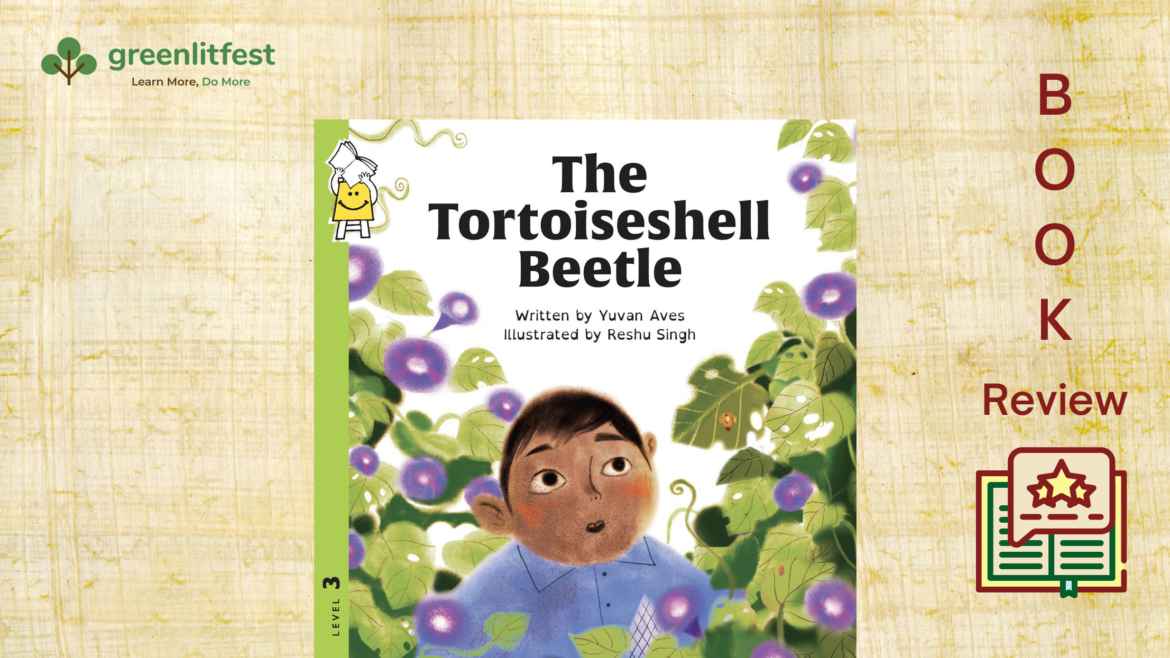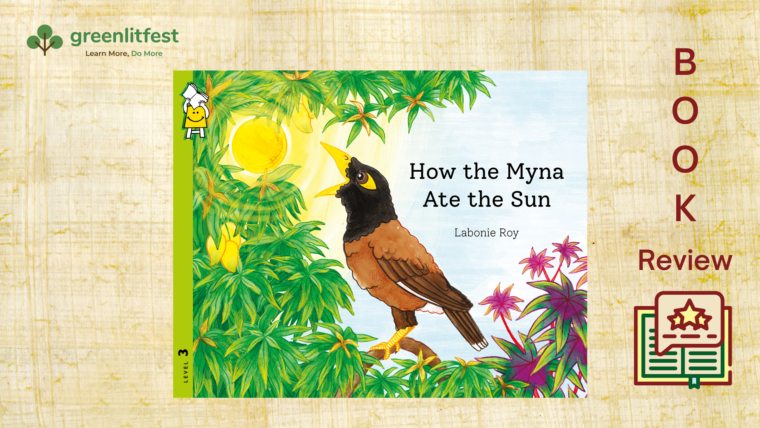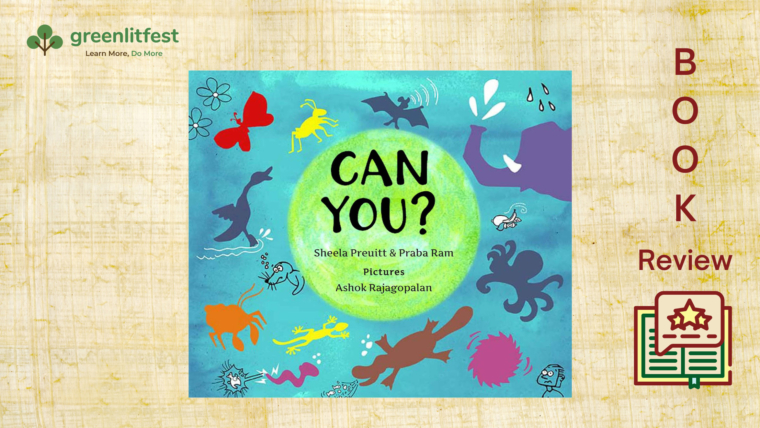Sometimes, it’s not just about saving nature—it’s about becoming a part of it by truly experiencing its beauty. The Tortoiseshell Beetle, written by Yuvan Aves and illustrated by Reshu Singh, brings this idea to life. The book emphasizes the importance of connecting with the natural world, highlighting how it can make us feel alive and whole, reminding us that nature isn’t something separate from us, but something we are intrinsically a part of.
This work of fiction is about a young boy named Rohit. The story begins at Rohit’s school, where we are introduced to his struggles with dyslexia. Though the book doesn’t explicitly mention the condition, it reflects Rohit’s challenges with spelling, reading, and other schoolwork that typically comes easily to his peers. His journey starts in a place of frustration and confusion, surrounded by an academic system that often makes children like him feel lost or left behind.
Rohit’s story may resonate with many children who experience similar struggles in today’s education system. In the early pages of the book, Rohit’s world feels bleak, weighed down by his constant difficulties with learning. Yet hope appears in the form of his teacher, Sudha. She recognises that Rohit needs more than just textbooks and rote memorisation. By guiding him towards nature, Sudha offers him an opportunity to find joy and discover himself beyond the boundaries of the classroom. Her influence provides Rohit with the emotional and mental space to explore his potential in a setting that doesn’t judge him based on his academic performance.
As the story unfolds, Rohit’s connection with nature deepens. He starts to feel a sense of belonging in the natural world. The lush illustrations by Reshu Singh bring this journey to life with vivid colours and intricate details, particularly during the monsoon season, when nature seems to burst forth with energy and beauty. Reshu has thoughtfully incorporated various elements of Indian flora and fauna in the book. The pages are filled with lively spreads of insects, amphibians, and birds thriving during the monsoon, creating a rich, immersive visual experience. Each illustration is carefully crafted to reflect the diverse ecosystem of India, from its vibrant plant life to the tiny creatures that come alive during the rains, making the story not only visually stunning but also culturally relevant and engaging for readers.
At its core, The Tortoiseshell Beetle raises an important critique of modern education systems, where children often have little time or opportunity to engage with the natural world. Rigid curriculums, packed schedules, and the pressure to excel academically can leave children feeling overwhelmed and disconnected from their surroundings. Yet, as the book suggests, connecting with nature offers children a chance to explore, learn, and grow in ways that traditional education might overlook.
Sudha, Rohit’s teacher, is portrayed as a beacon of hope—one of those rare educators who truly understands the importance of holistic development. She goes beyond the standard expectations of a teacher, helping Rohit find his own path. The book celebrates educators like Sudha, who are a boon to the education system. Teachers like her recognise the importance of fostering a child’s emotional, mental, and creative well-being. Through nature, Sudha helps Rohit bloom in his unique way, showing that real growth often happens outside the confines of a classroom.
Experts like Richard Louv, author of Last Child in the Woods, have long emphasised the positive impact of nature on children’s well-being. Louv famously coined the term “nature-deficit disorder” to describe the disconnect many children have from the natural world. He warns that this lack of interaction with nature can lead to a range of behavioural and emotional issues, including anxiety, attention difficulties, and even depression. Similarly, research by Dr. Ming Kuo of the University of Illinois has shown that exposure to nature can improve cognitive functioning, reduce stress, enhance mood, and boost creativity in children. The Tortoiseshell Beetle reflects these ideas, illustrating how time spent exploring the natural world can offer children like Rohit not just emotional healing but also a sense of purpose and self-worth.
The metaphor of the tortoiseshell beetle, as used by author Yuvan, is especially powerful. At first glance, the beetle’s larvae look rough, hairy, and unappealing—almost like something to be avoided. But with time, these larvae transform into beautiful beetles, hiding their delicate wings beneath a hard shell. The author draws a beautiful parallel between children and these beetles, suggesting that like the insects, children have hidden potential and capabilities. Sometimes, they may appear vulnerable or out of place, but with time, care, and the right guidance, they too will transform and spread their wings when ready.
This comparison between children and beetles also subtly touches on the importance of patience and understanding in both education and parenting. Every child, like Rohit, has a unique timeline for growth. The book gently reminds us that we must give children the space to grow and develop in their own time.
The Tortoise Shell Beetle is more than just a children’s book. It’s a conversation starter—a meaningful exploration of how nature, education, and personal growth are intertwined. It challenges readers to think about the role nature plays in our lives and the ways in which education can support, rather than hinder, a child’s development. This book also offers valuable insights for adults—parents, teachers, and anyone who works with children—on the importance of fostering a connection with nature.
The Tortoiseshell Beetle is a story of hope, growth, and transformation. Through Rohit’s journey, readers are reminded that nature is always there, waiting to be discovered, offering its wisdom and healing to those who are willing to engage with it. Reshu Singh’s stunning illustrations of Indian insects, amphibians, birds, and flora enhance the story’s message, making this beautifully written and thoughtfully illustrated book a must-read for children and adults alike.

Anupama Benachinamaradi is a creative writer and columnist. With 8 children’s books under her belt, she is also the founder of Awwa Pustaka, a publishing house specialising in children’s books in Kannada and English. A passionate nature lover, she frequently volunteers as a resource person at nature camps for children. In her leisure time, she delights in birdwatching and observing insects, all while enthusiastically tackling the clever questions children pose to her!



